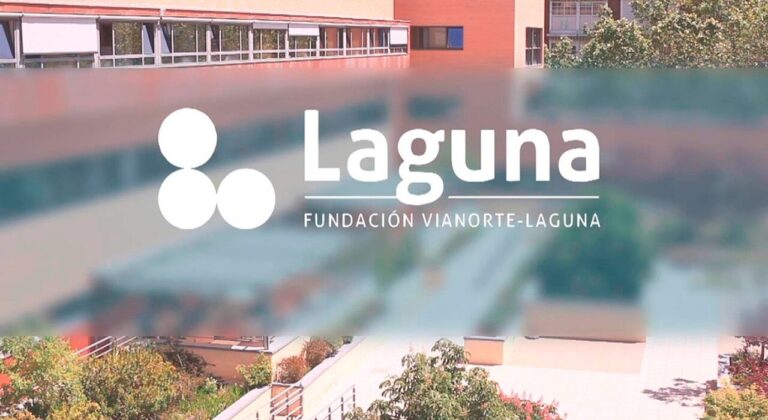Since COVID forced schools to close, teachers, families and education experts predicted that the disruption in education would have important short and long-term consequences. After the return to in-person classes, several international reports confirm the worst omens are true, and recommend recovery measures.
The World Bank, for example, has published several reports with data from evaluations carried out in numerous countries across five continents. Based on this information, and other data collected by Unicef regarding the length of school closures in each region, the global consulting firm McKinsey has also come out with its own report. Experts from different organizations, such as Harvard and the Brookings Institution, have also joined in on the analysis of the issue.
Almost an entire school year behind
Although data varies slightly from one study to another, the reality that these reports spotlight coincides… and it’s negative. According to the World Bank, at the height of the pandemic, school closures affected 1.6 billion children, the vast majority in low- and middle-income countries. On average, schools completely closed their doors for 121 school days, in addition to 103 more days where they were partially closed.

However, the length of these disruptions was very different depending on the region. Of the 102 weeks since February 2020 – when schools began to close – to January 2022 – when many countries had returned to near normality – Europe, Central Asia and sub-Saharan Africa had taught completely in-person for 45 weeks, just under 40 in East Asia and North America, but a mere five weeks in South Asia and Latin America, the two regions where restrictions have since been lifted. (The Philippines just returned to in-person learning, after more than two years.)
Logically, these are the areas where educational loss is highest and recovery is furthest out. Specifically, according to McKinsey calculations, they’re about 12 months of learning behind –that is, one school year and two months–, compared to only 3.5 months in Europe or Central Asia (see graph).
However, there is no exact correlation between educational setbacks and the duration of school closures, because there are other factors to take into account; for example, technological resources available in each education system, which allowed some to offer quality remote education while others couldn’t. Thus, although in sub-Saharan Africa classes continued in-person longer than in the United States, the loss has been greater.
Middle-income countries, such as India, Mexico or the Philippines, have been the hardest hit by the disruption
On the other hand, educational decline has generally been measured against pre-covid generations’ outcomes in those same countries. Therefore, regions where educational performance was already low to begin with, the pandemic-led downturn was less dramatic. This explains why, according to the McKinsey report, the countries most negatively affected have been those of middle-income and educational levels. There the grades could get significantly worse, and the technical resources available for virtual learning were poor. Add the extended school closures (as occurred, for example, in India, Mexico or the aforementioned Philippines), and the result is inevitable.
Core indicators
The pandemic’s negative effect on education is shown especially clearly in several core performance indicators, such as absenteeism, failing or mastery of fundamental skills.
Regarding absenteeism, a U.S.-focused study indicates that, although absenteeism rates have decreased slightly compared to at the height of the pandemic, they’re still much higher than before the disruption. For example, in California the rate has almost doubled. At the national level, it’s estimated that between 1.7 and 3.3 million students could drop out during the last four years of secondary school as a result of the pandemic’s disruption.
The situation is even worse in low-income countries. In Uganda, an estimated one-third of all students are at risk of not returning to school. These projections are based on what happened with the Ebola epidemic between 2014 and 2016, which significantly increased the dropout rate, especially among girls and within the poorest communities.
The percentage of students behind in reading has grown around the world, and especially where lockdowns were longest
Another core indicator that reflects the effect of the pandemic is the so-called “educational poverty,” which the World Bank defines as the inability to read and understand simple texts well at the age of 10. It’s estimated that its prevalence would increase 10 percentage points worldwide as a result of school closures, reaching 63% of students. However, this bump has been much higher in countries with longer lockdowns. For example, throughout parts of Latin America and South Asia, it has exceeded 20 percentage points, affecting 80% of students. But sub-Saharan Africa continues to lead in absolute terms, with its educational poverty rate at over 90%, but the pandemic’s effect on education has been relatively lower there.
On the other hand, school shutdowns have also affected other factors related to the social, emotional and physical well-being of students. Specifically, a number of studies point to an increase in violence amongst minors, cases of anxiety or teenage pregnancies. Obesity rates have also increased, as millions of boys and girls stopped receiving free lunches via their schools’ meal programs. At the peak of the pandemic, it’s estimated that 370 million students were affected, a figure that dropped to 180 million in October 2021.
Unequal effects: academic subjects, gender and socioeconomic status
In addition to reading skills, math skills have also suffered greatly due to the educational disruption. In fact, according to most national measurements, the deterioration in this area has been even greater. Experts explain that this type of content requires more teacher-student interaction for students to pick up and retain skills. (That’s why the summertime tends to affect students’ math skills more than others.)
The reports also indicate that the pandemic’s effect on teaching environments has been greatest among students in their first years of primary school. Several reasons are identified: they had less cumulative knowledge to start with, meaning their «reserves» were lower; they need greater support from teachers, so virtual teaching is less effective; and they learn more per year than older children do, so the relative loss due to school closures is also greater.
On the other hand, data from different studies indicate that the negative effect of the pandemic has been more pronounced among girls, especially in poor and middle-income countries. This may be due, however, to cultural factors (such as less attention being placed on girls’ education), but it may also be related to the setbacks related to math skills, where female students tend to obtain worse results in comparison to their male peers.
School closures have made educational inequalities increase, even in rich countries
What all the studies do agree on is that, within each country, students with a lower socioeconomic status and minorities – frequently related factors – have suffered a stronger educational impact. Scarcer technological means to keep up with remote learning, typically lower educational preparation of their parents, the impossibility of paying for private tutors or academic reinforcement, and their overall inferior school performance before COVID explains why the educational gap has increased significantly due to the pandemic. In any case, even in a country with favorable conditions like the Netherlands (an only slightly lopsided society, shorter-than-average school shutdowns and solid resources for virtual teaching), inequality has increased.
And now back in the classroom, students’ learning recovery is also uneven. According to a McKinsey report on the topic, American students enrolled in schools with a majority Black student body are still five months behind in reading and math, compared to previous generations of those same centers; in contrast, those who attend majority-white schools are currently only two months behind.
The same can be said for school absenteeism and socioeconomic levels: while their rates have almost returned to pre-pandemic levels among wealthy students, there is hardly any recovery among the poorest.
What can be done
Given the bleak outlook that the pandemic has left throughout classrooms, educational experts recommend, first of all, making an exhaustive and early diagnosis of accumulated learning deficits, especially in essential skills, that is, reading and mathematics. Some education systems are reinforcing these subjects by increasing the amount of time dedicated to them, or designing reinforcement programs for those furthest behind.
Small, supplemental work groups, especially intensive ones (a significant number of hours of reinforcement in a short period of time and with very close monitoring of each student), have proven to be a very effective tool in helping students’ who find themselves lost, especially those in the early years of primary school. An article published by the Brookings Institution recommends making these sorts of groups the main mechanism to fight against inequalities generated by the pandemic-induced educational disruptions, above reducing class sizes or extending the school year.
Other proposals recommend taking advantage of the recently harnessed knowledge of educational technologies brought on by the shutdowns (for example, more extensive databases to follow students’ progress, or useful software to create content and evaluate students), or to invest more money in mental health resources in schools.
Translated from Spanish by Lucia K. Maher
